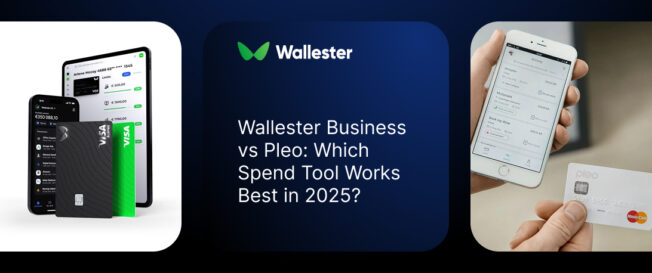Embedded finance has moved far beyond hype. What began as a buzzword – bolted-on payments or checkout financing – has become a baseline expectation across industries. Today, businesses that fail to integrate financial services into their customer journeys risk falling behind.
McKinsey projects that embedded finance could generate over €100 billion in revenues in Europe by 2030, driven by customer demand for seamless financial touchpoints and the availability of ready-made infrastructure. For companies weighing whether to build, buy, or partner, the question is no longer if they should embed finance but how quickly and effectively they can do it.
But the journey from vision to execution is fraught with risk. Choosing the wrong partner or betting on untested infrastructure can damage a brand’s reputation overnight. And while the opportunity is enormous, the stakes are equally high.
That’s why one of the smartest strategies emerging in this space is deceptively simple: before you launch an external embedded finance product, adopt the technology internally.
What Embedded Finance Really Means Today
At its core, embedded finance is the integration of financial services – payments, lending, insurance, even investment products—directly into non-financial platforms. Rather than redirecting customers to a bank or third-party service, the financial product appears at the moment of need, inside the environment where the customer is already transacting.
Examples are everywhere:
- A customer buying an expensive appliance online is offered instant credit at checkout.
- A ride-hailing driver can receive daily earnings directly onto a prepaid card, skipping bank delays.
- A B2B SaaS platform can offer integrated invoice financing so its users get paid faster.
- An online marketplace can provide seller insurance without requiring external brokers.
This frictionless integration creates stickier customer relationships, new revenue streams, and a competitive edge for platforms that embrace it.
Yet for many businesses, the challenge isn’t why they should pursue embedded finance – it’s how to adopt it without reinventing the wheel, sinking resources into multi-year tech builds, or exposing themselves to regulatory risk.
Ready-to-Deploy Infrastructure: Business and White-Label
This is where ready-to-deploy solutions like Wallester’s come into play. Instead of building everything in-house, companies can leverage infrastructure designed to be integrated quickly, securely, and at scale.
- Wallester Business is tailored for internal operations: issuing and managing physical or virtual cards, tracking expenses, handling payroll, or controlling ad spend. It allows companies to modernize their financial workflows without heavy development.
- Wallester White-Label powers external customer-facing products. It provides the underlying infrastructure for businesses that want to launch fintech offerings – whether that’s a new digital bank, a card program, or embedded payments within an existing service.
Used together, these solutions form a dual pathway: first, adopt the solution internally to prove the concept. Then, once the infrastructure is validated, expand outward to customers.
The High Stakes of Partnership
The attraction of embedded finance is clear: shorter time-to-market, reduced development overhead, and instant credibility with customers who expect seamless experiences. But it comes with an unavoidable truth – companies are placing enormous trust in their providers.
Embedded finance isn’t just another software integration. It’s a direct extension of your brand. If something breaks – transactions fail, disputes go unresolved, compliance lapses – it’s your logo, not your provider’s, that customers blame.
That’s why hesitation is so common. Leaders see the upside but balk at the commitment. They’re not just selecting a tech stack; they’re staking brand equity, customer loyalty, and operational integrity on a partner they often haven’t tested in the wild.
And history shows the risks are real.
Lessons From Apple’s Missteps
In 2019, Apple and Goldman Sachs launched the Apple Card with bold ambitions: zero fees, tight integration with the iPhone, and a user-friendly digital interface. It was meant to reimagine what a credit card could be.
But beneath the sleek design, cracks appeared quickly. Customers reported mishandled disputes, unresponsive support, and confusing communication. The Consumer Financial Protection Bureau (CFPB) ultimately fined both companies $89 million for failing to meet consumer protection standards.
The reputational fallout was immediate. Apple, a company built on customer trust and smooth UX, was suddenly associated with poor financial service experiences. Goldman Sachs, already new to consumer banking, took heavy criticism for execution failures.
The takeaway is stark: if Apple and Goldman Sachs – two global giants with immense resources – struggled to get embedded finance right, smaller players must tread carefully. The risks of misalignment, operational gaps, or undercooked infrastructure are too significant to ignore.
A Smarter Form of Due Diligence
So how can companies mitigate these risks before signing long-term contracts? Traditional due diligence – reviewing decks, checking references, sitting through polished demos – isn’t enough, although it should certainly be done.
The smarter approach is to become a customer before becoming a partner.
By actively using a provider’s consumer-facing or business-facing solution, you experience the technology and the support in real conditions. This creates validation that no brochure or sales pitch can replicate.
- Proof of performance: You see how the system handles real-world usage.
- Service quality: You interact with support teams, test escalation processes, and judge responsiveness.
- Cultural alignment: You discover whether the provider acts like a partner in practice or just in theory.
Instead of gambling, you’re gathering data. Instead of promises, you have firsthand evidence.
Internal Adoption as a Launchpad
This is why internal adoption makes so much sense as a stepping stone to innovation. By running your own operations on the same infrastructure you plan to extend to customers, you gain:
- Operational empathy. You know the pain points because you’ve experienced them yourself.
- Feature prioritization. Real use cases reveal what matters most to end users.
- Faster rollout. You’ve already built a feedback loop and validated workflows before external launch.
Consider a travel that first uses Wallester Business to manage bookings, payments and refunds. Once the system proves itself—automated expense management, clear reporting, reliable payments – the agency can imagine extending similar financial services to its clients. The internal validation makes the external product not only safer but more competitive.
This phased approach transforms embedded finance from a risky leap into a controlled evolution.

How Wallester Encourages the Journey
At Wallester, we believe in this journey so strongly that we make our consumer-facing solution available for free. It’s not just a gesture—it’s a statement of confidence. If our infrastructure can handle your own daily operations, it can certainly scale to customer-facing products.
Many of the most successful fintech launches we’ve supported didn’t start with huge funding rounds or massive development teams. They started small:
- Issuing cards to employees.
- Automating company expenses.
- Streamlining payroll.
Once those systems proved reliable, companies realized the same infrastructure could underpin full-scale customer-facing fintech solutions.
This is the partnership evolution we support: from user, to validator, to innovator.
Beyond Cards: The Broader Embedded Finance Landscape
While card issuance and payments are among the most visible applications, embedded finance extends far beyond them. The same internal-to-external adoption model applies across verticals:
- Insurance. A logistics company might first test embedded insurance internally to cover vehicle fleets before offering protection products to third-party drivers.
- Lending. A SaaS company might use embedded credit internally to manage cash flow before extending invoice financing to its customer base.
- Wealth management. A platform might start with employee investment accounts before rolling out white-labeled investment tools to users.
The principle holds across all categories: start with internal adoption, learn what works, and only then expand outward.
From Adoption to Innovation
Embedded finance is not just about saving development costs or getting to market faster. It’s about transforming how businesses serve their customers.
Companies that validate internally before going external build more resilient, user-friendly, and scalable solutions. They enter the market with proof in hand, operational insights baked in, and confidence that their infrastructure can deliver.
That’s how adoption becomes innovation.
And in a landscape where embedded finance is rapidly becoming the norm, it’s not just a smart strategy—it’s the difference between leading the trend and being left behind.



